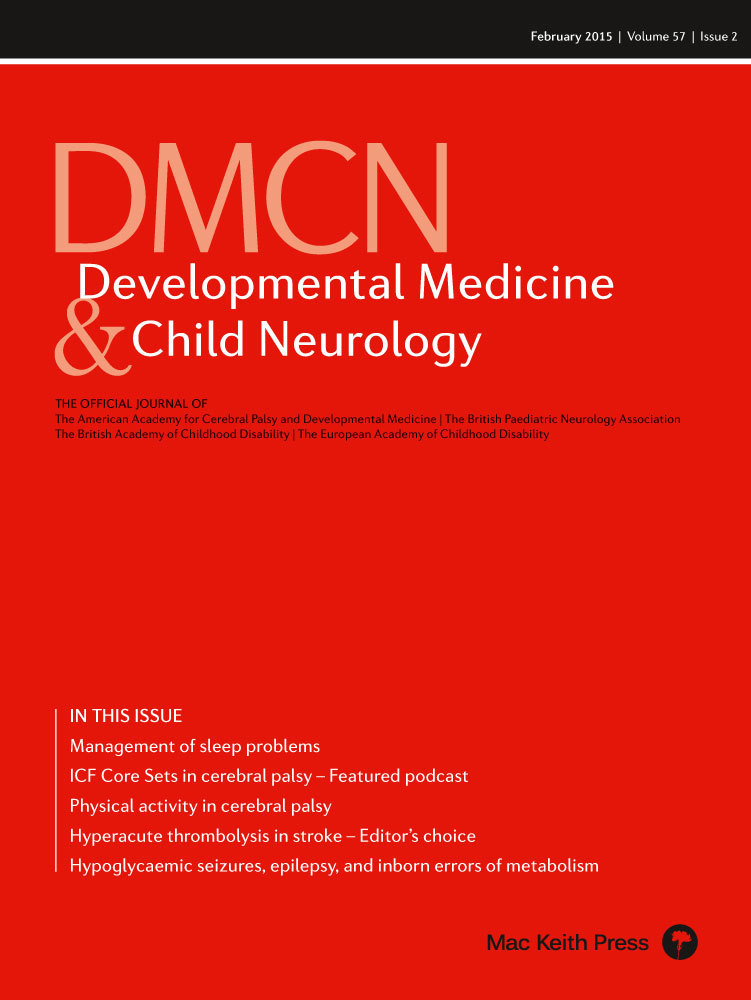Risk of cerebral haemorrhage in children with sickle cell disease
Abstract
This commentary is on the original article by Kossorotoff et al. on pages 187–193 of this issue.
Ischaemic stroke occurs in about 11% of patients with sickle cell disease (SCD) before the age of 20 years, with a peak incidence between 2 years and 5 years. It usually follows the occlusion of the big vessels of the Circle of Willis, hence the usefulness of transcranial doppler (TCD) in identifying patients at risk. Guidelines call for chronic transfusion therapy to keep the HbS concentration at <30% for the primary and secondary prevention of stroke.1
In young adult patients (with a peak between 20y and 29y), stroke is usually haemorrhagic, related mainly to aneurysmal rupture, or moyamoya syndrome. The conundrum, however, is: at what age does the transition from ischaemic to haemorrhagic risk take place? Could the risk for both co-exist or overlap? Are they part of a continuum, occurring sequentially? It is pertinent to unravel these issues because, while the incidence of ischaemic stroke in SCD has been falling steadily in countries where TCD screening, followed by transfusion therapy, is practised, the rate of haemorrhagic stroke has remained constant. Identification of its risk factors would, therefore, provide an opportunity of designing appropriate screening and preventive measures.
The underlying pathophysiology of stroke in SCD is related to chronic vasculopathy.2 Several mechanisms contribute to this but the central paradigm is nitric oxide resistance, inactivation and impaired availability, triggered by circulating free heme. Nitric oxide is a critical endogenous vasodilator synthesized by endothelial cells and its depletion produces extensive oxidative stress, mediated by a cascade of inflammatory and signalling agents. There is consequent vasoconstriction, platelet activation, thrombin generation and up-regulation of adhesion molecules. This leads to endothelial intimal proliferation culminating in arterial stenosis and eventual occlusion. However, within areas of the hypertrophied smooth muscle of cerebral arteries, foci of atrophy and fibrosis of the media have been described. It has been hypothesized that these weakened areas are prone to aneurysms. Indeed, several reports have confirmed the presence of multiple aneurysms in patients with SCD, with a predilection for the posterior cerebral and the basilo-vertebral arteries.3
While there have been several anecdotal reports of haemorrhagic stroke in children, detailed studies have been few. Strouse et al.4 identified 15 children with SCD who had haemorrhagic stroke and compared them to 29 with ischaemic stroke and found that the former were significantly older (mean age of 10.4y [SD 1.3y] vs 5.2y [SD 0.4y]). In addition, haemorrhagic stroke was associated with a history of hypertension, recent blood transfusion, and the use of steroids or non-steroidal anti-inflammatory agents.
A major advance in identifying the risk factors is the study by Kossorottof et al.5 They report a cohort of 250 children with SCD who had been followed for 9 years, of whom seven had risk factors for haemorrhagic stroke. Among the seven, five also had risk factors for ischaemic stroke. The 38 patients who had only ischaemic risk, were significantly older than the other group. Among the patients at risk for haemorrhage, they found nine intracranial aneurysms, mostly in the posterior circulation. Importantly too, they found that the ratio of ischaemic: haemorrhagic stroke has remained constant compared with historical figures, in spite of interventions with TCD and transfusions. Their data favour the concomitant presence of stenosis and intracranial aneurysms in the same patients. If, indeed, there is a common pathogenetic pathway for both, the question arises as to why early institution of transfusion therapy appears not to prevent aneurysm formation and/or haemorrhagic stroke. Is it that while transfusions may halt the progression of intimal proliferation so that the risk of ischaemic stroke is reduced, they have no effect on the areas of weakness already created by focal necrosis within the endothelial smooth muscle? Or are we leaving the intervention too late?
These are areas for collaborative, multidisciplinary, prospective studies, which might lead to a reduction in the risk of haemorrhagic stroke, as has been done for ischaemic infarction.




